Over a year ago, PayFit took a step further to make work a source of fulfillment for everyone.
By creating a whole new user experience, dedicated to helping organizations keep people fulfilled, the aim was to bring to small businesses the same good management practices from larger companies’ habits.
The vision of this new experience first took life in 1:1, a brand new product dedicated to regular exchanges between managers and employees, that implements feedback culture and strengthens communication & engagement within companies.
Context: The 1:1 experience
1:1 (or "one-on-one") involves 2 participants: a manager and their direct reports. As soon as a new person joins the team, the manager can welcome them properly through this PayFit feature. Managers and direct reports are able to bond through 1:1s, creating a strong relationship based on trust, empathy, and transparency.
A manager acts as a coach: by knowing their direct reports, they provide them the best support to help them grow, be fulfilled, and achieve great work.
For the direct report, it’s a great help to reflect on their evolution and progress, particularly before a performance review.
Company-wise, 1:1s helps to maintain human centricity. Since being considered & feeling understood by your manager is key to retaining talent and ensuring their wellness, 1:1s are a big help to do so, and this is why we built it into PayFit.
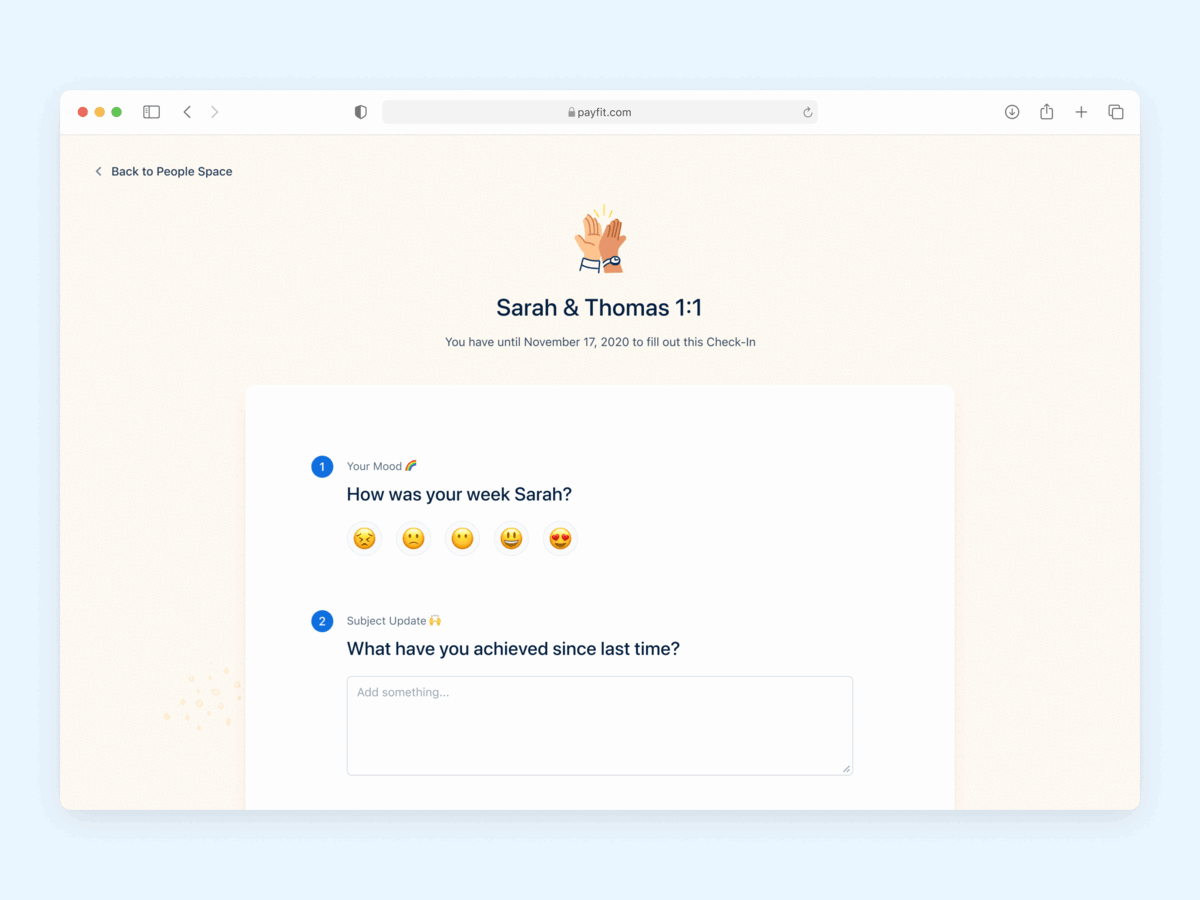
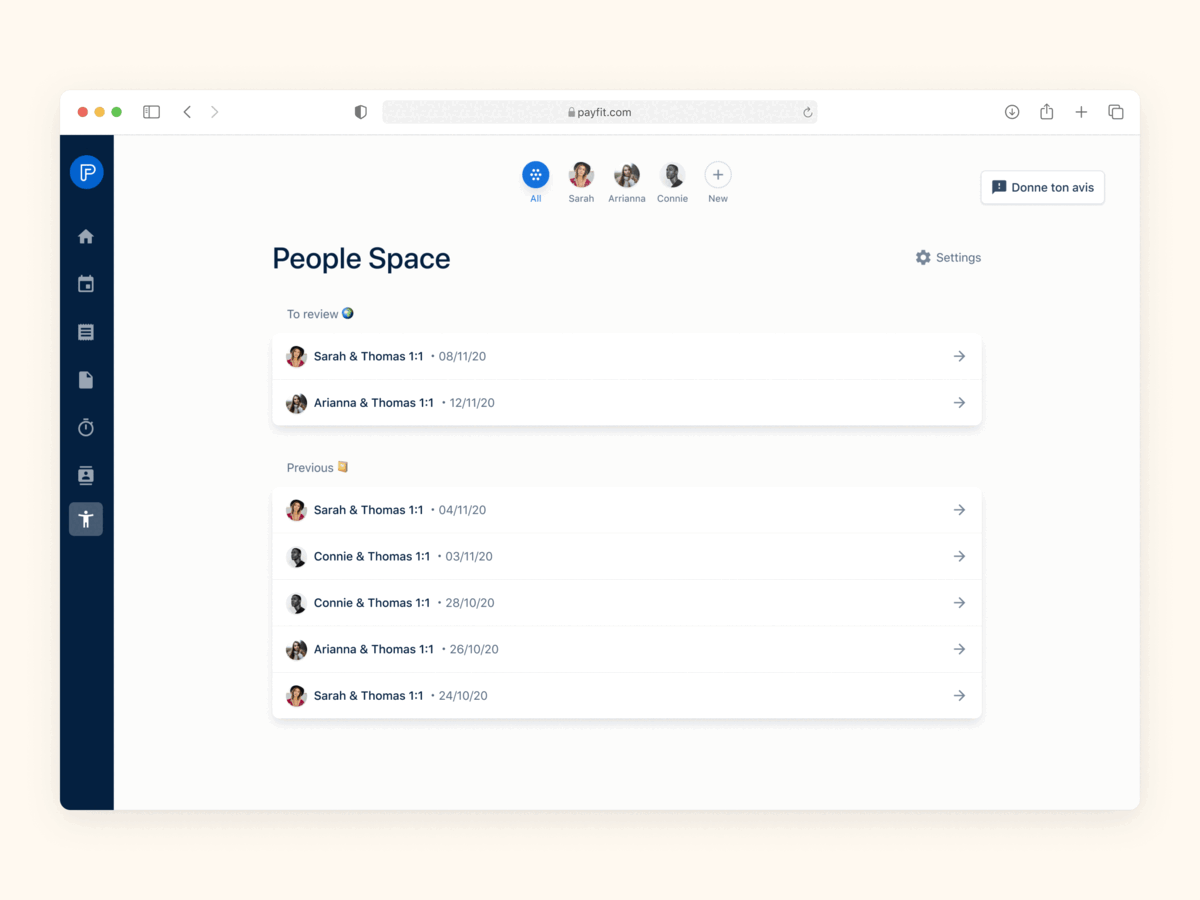
After the initial launch of the project, we faced a challenge: the adoption of the 1:1 was quite low. Managers got bored after a few exchanges, and direct reports didn't take the time to carefully fill out their 1:1s anymore.
As the first intent was to help companies pay attention to their employees wellness by providing them key management best practice, we had to find a new approach. We wanted to help managers focus on active listening and put Care as a starting point of their relationship with their direct report.
To do so, we focused our work around a simple yet crucial question managers ask during 1:1s:
How do you feel?
What’s wrong, then?
When meeting with managers...
We understood that employees have difficulty writing down in black and white when they weren't feeling well - so managers were not prepared to help their direct report find solutions. Worst of all, even when direct reports had the courage or honesty to express their bad feelings, our system didn’t help managers to take action & find solutions.
As knowing the mood of their team is a great help for managers to organize themselves and be proactive, the current system, with only 5 emojis, was an issue. It wasn’t granular enough to deep dive and really understand how their team felt. They needed some help to break the ice and have the right conversation.
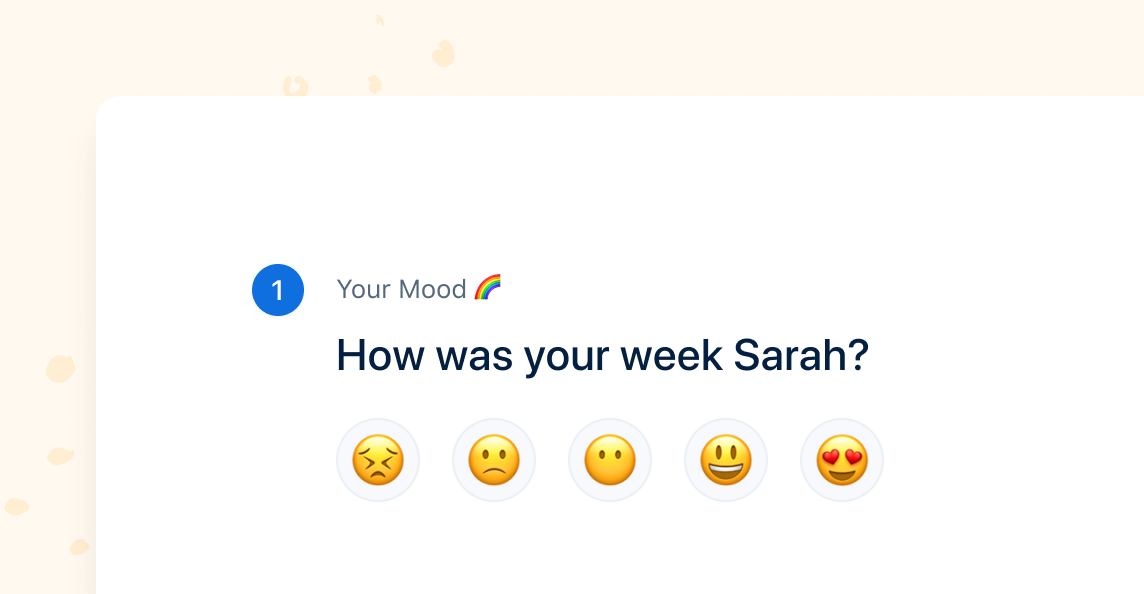

See for instance feedback that we received:
"There are many who answer the same thing every week, I don't know how relevant it is… It's not very adaptable, it looks too stable.”
– Alice, manager of 8 people
"I often ask them this question [...], it really helps me understand what we could do to make them feel more fulfilled... It also allows me to make them talk about what's going on behind the scenes, the projects, their daily life...”
– Clémentine, manager of 3 people
When meeting with employees...
The main problem appears to be that employees didn’t allow themselves to say when something was wrong in a written form. Even worse, for some of them, they lost the habit of asking themselves how they feel and keep a kinda-happy emoji all of the time.
Problem to solve and opportunity to seize
The collection of data is the main pain point. We had to find a way to empower employees to share how they feel with honesty and subtlety.
The aggregation of the collected data should support managers to better interpret their team’s mood and understand its evolution at a glance.
Hypotheses
We had 2 main hypotheses:
- The first one was that emojis prevented people from interacting with each other in an honest and straightforward manner.
- The second one was that we needed to create a bridge between manager and employees, something to break the ice and help them have real and deep talk when necessary.
The case of emojis
To empower employees to share how they really feel, we need to find an approach that helps people ritualize their exchanges. And when you want to tackle relationships between people, tone of voice is everything.
As PayFiters, we are very much into startup culture & slang: informal communication and a lot of emoji use. It’s not the case for all our customers, who typically are SMEs. Of course we wanted to keep the tone casual, but we also wanted to be trustworthy, since we are talking to professionals.
So, was our initial tone outside of an acceptable boundary? Were we speaking the wrong language? Or worse, did we create a wrong opinion of us, with an overly friendly tone of voice?
At this moment, the culprit became clear to us: it must be the emojis! Maybe, instead of opening the door and allowing dialogue, they prevented discussions from taking place.
Another emoji deficiency strikes us at this moment: emojis are not an inclusive enough system for a B2B app made for everyone. Not everyone can understand face emotions, and not everyone interprets emotions the same way. Emojis can be misinterpreted, which can lead to them reflecting the wrong emotion, leading to bad communication… all the things we wanted to avoid!
Working along as a Triforce, we benchmarked how people are used to sharing their emotions with a system. From airport toilet cleanliness to pain scales, emojis & smileys appeared to be the least evil. Yes it’s not perfect, yet there’s no way we can systematize the collection of the full range of emotions that a human being can feel, while guaranteeing a quick and efficient collection - as 1:1s are by nature a recurring event.
🧐 What's a Triforce?
💡 A Triforce is a team formed by a Product Manager, an Engineering Manager and a Product Designer. They share the same goals, the same scopes and therefore the same impact. Along with 3 to 5 engineers, they form a squad.
Getting rid of the emojis was therefore not an option. We had to find a different approach, keeping emojis by improving their potential, and getting rid of the misinterpretations they can lead to. We had to find a way to contextualise emojis to be as inclusive as possible.
Reaching out
"How do you feel?" is the least sincerely answered question of all. During this project, I got used to asking that question a lot, and especially insisting on receiving a meaningful answer, and trying variations:
- “How do you really feel?”
- “How was your week?”
- etc.
No matter how the question was phrased, the first answer was always: "Fine”.
But digging in, we understood that most people share how they feel through a mix of rating and keywords:
”I feel great, the year is very very intense for sales and January even more so, but otherwise everything is fine for me.”
– Jean, salesperson
”Very good, very good, I'm having a very good yet dense day, but otherwise very good.”
– Louis, human resources associate
Our solution
For the employees
We chose to keep the rating emoji system but to use a slider instead of a radio button. Users valued the possibility to explore the different moods. It allowed them to take a step back and reflect more on how they really felt.
To support this auto-analysis and provide context, we attached the different moods to a set of keywords. Our goal was to encourage users to share how they feel in a simple and direct way. Saying that you feel bad is different from saying that you feel bad because you’re stressed, anxious and/or irritated. You are no longer complaining, but objectively assessing the situation and reaching out for your manager to help you find a solution.
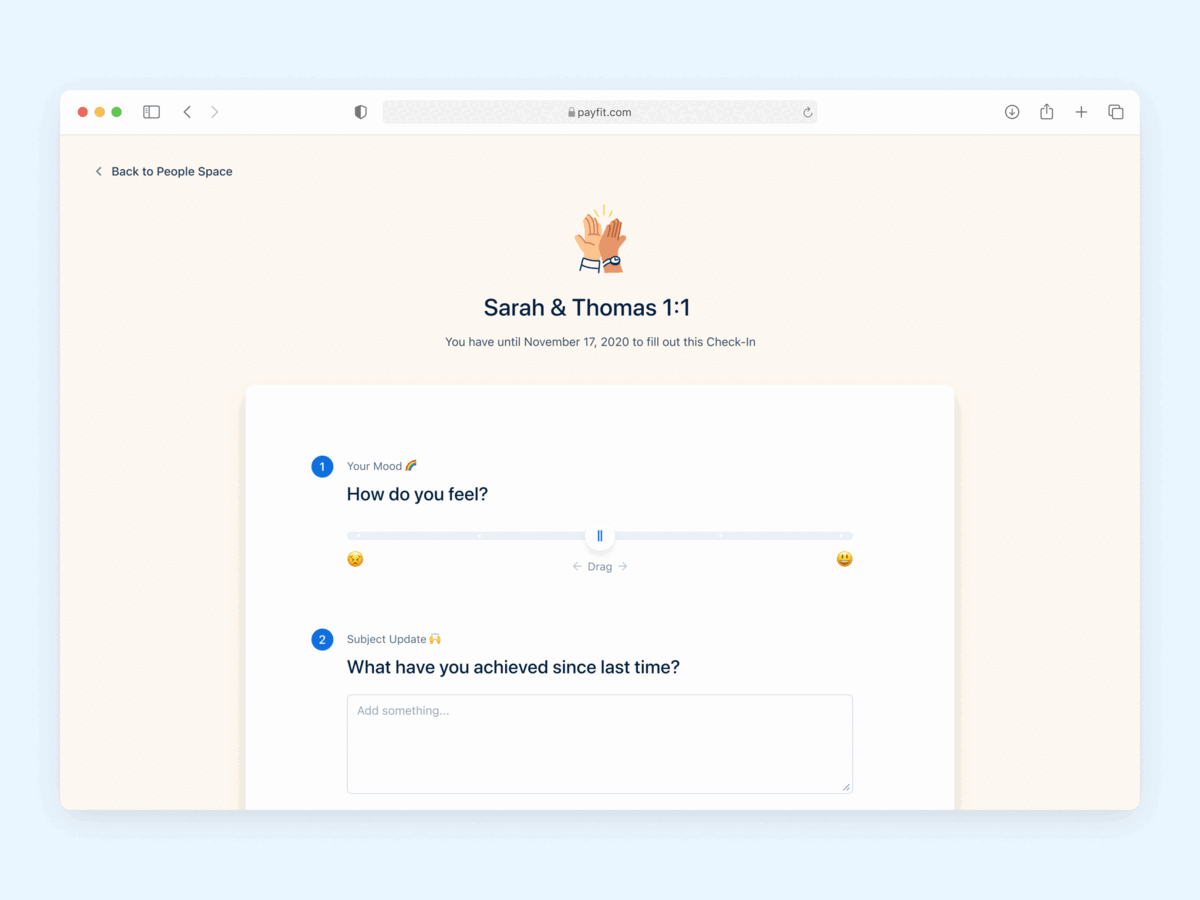
For the manager
We designed a widget that aggregates the mood data and allows managers to get what is the mood of their team globally, but also on a person-per-person basis. This widget also lets managers understand the trends of their team’s overall mood. Doing so, they can from now on understand weak signals, anticipate when something is wrong, and understand the virtuous patterns that keep their team fulfilled.
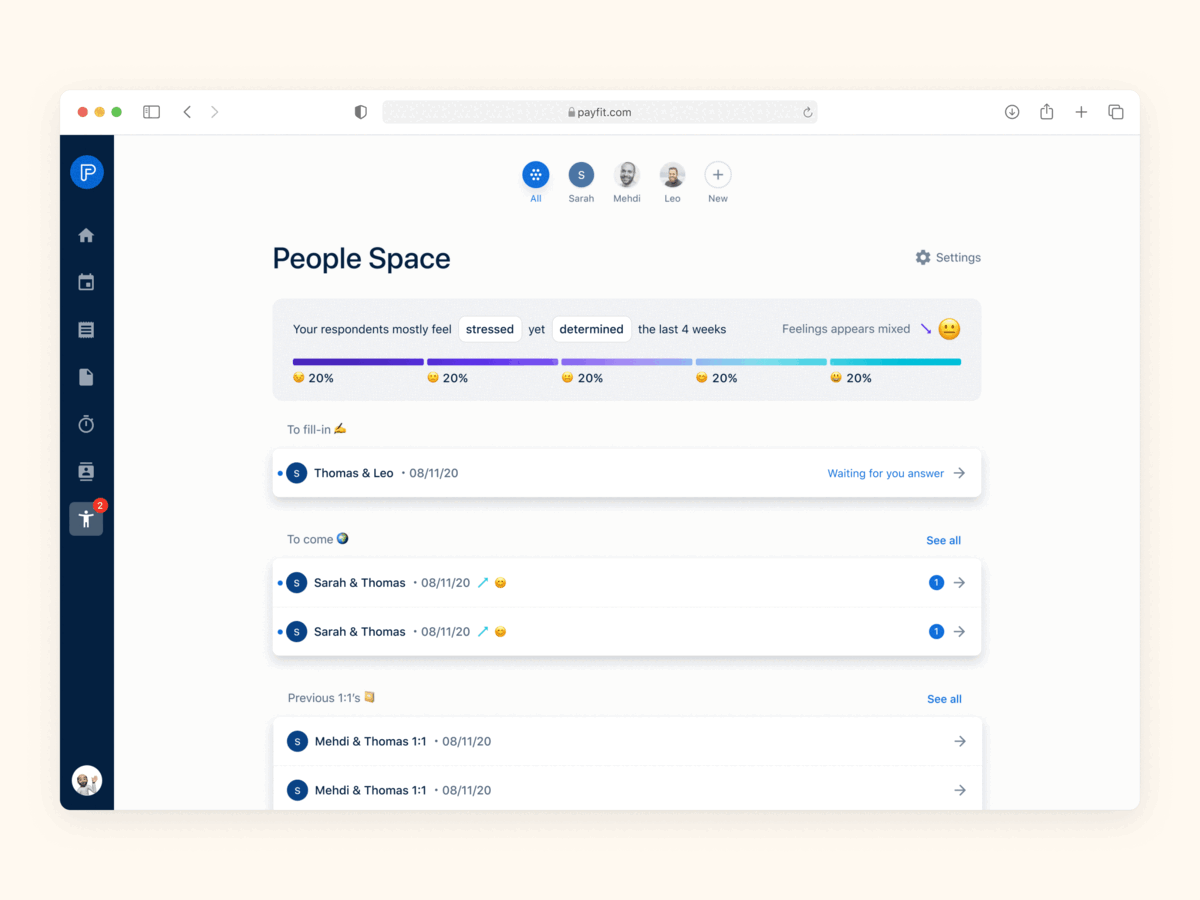
Results
Our results are first and foremost quantitative: we witnessed that users now tend to express their negative feelings more. It is complicated to be happy that someone is not doing well, yet it means something crucial for us: users allow themselves to express a negative feeling during their 1:1, which was not the case before.
We also received qualitative feedback from managers:
- First, the feature reduces blind spots by providing global insights of the team’s health that they couldn’t perceive before.
- Second, it helped them to be more attentive to their direct reports wellness and to detect sooner when something is wrong.
There is still a long way to go to significantly increase adoption, but this feature is a first step towards giving to managers the right tools to steer employees' performance and allow their time where it really matters, which is accompanying direct report and aiming for them to be as fulfilled as possible.
What’s next?
Boosted by positive feedback, we continue our initiatives to increase wellbeing at work and evangelize good management practices.
I hope that you enjoy reading this article as much as I enjoyed writing it!
Header photo by Serhii Tyaglovsky on Unsplash


